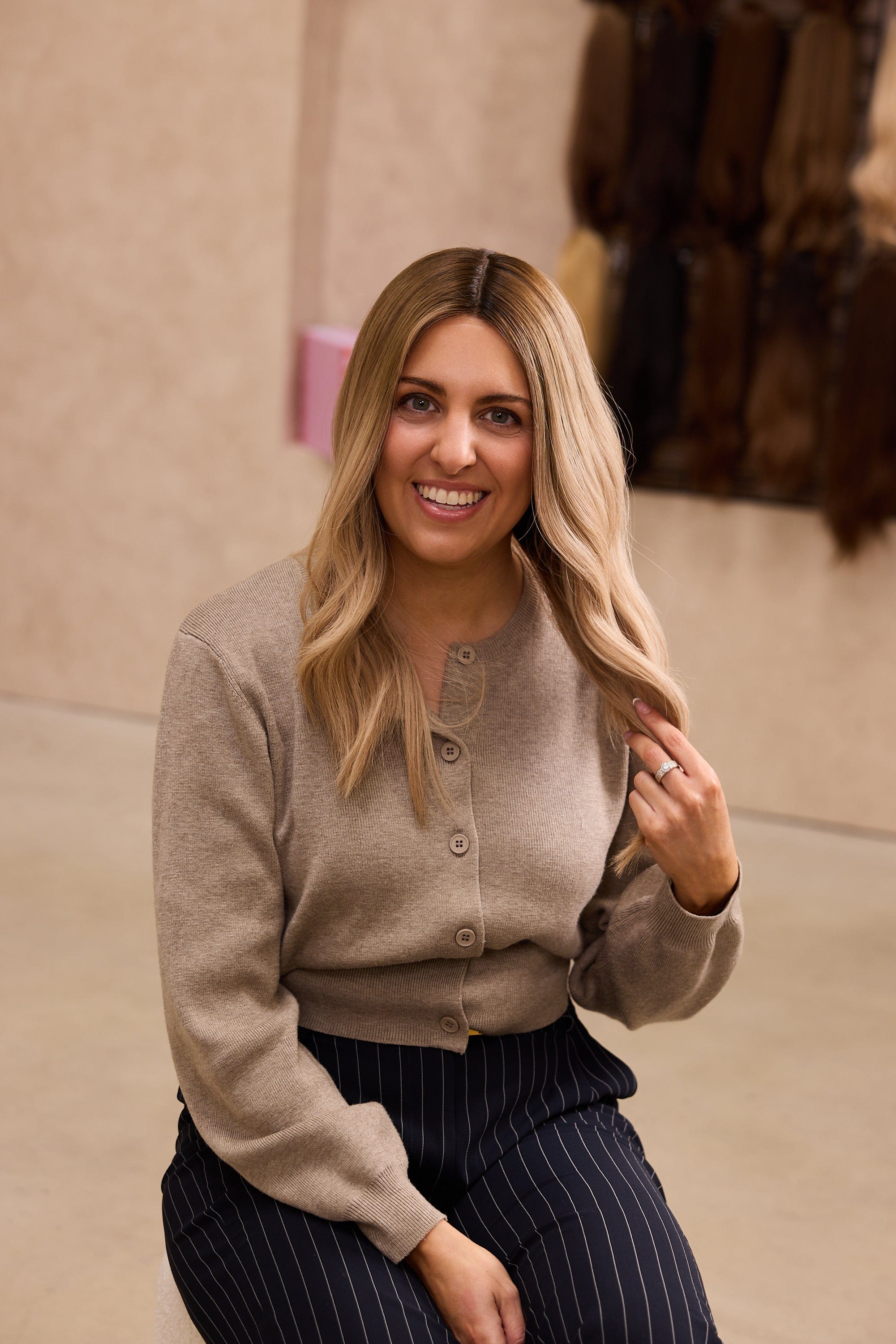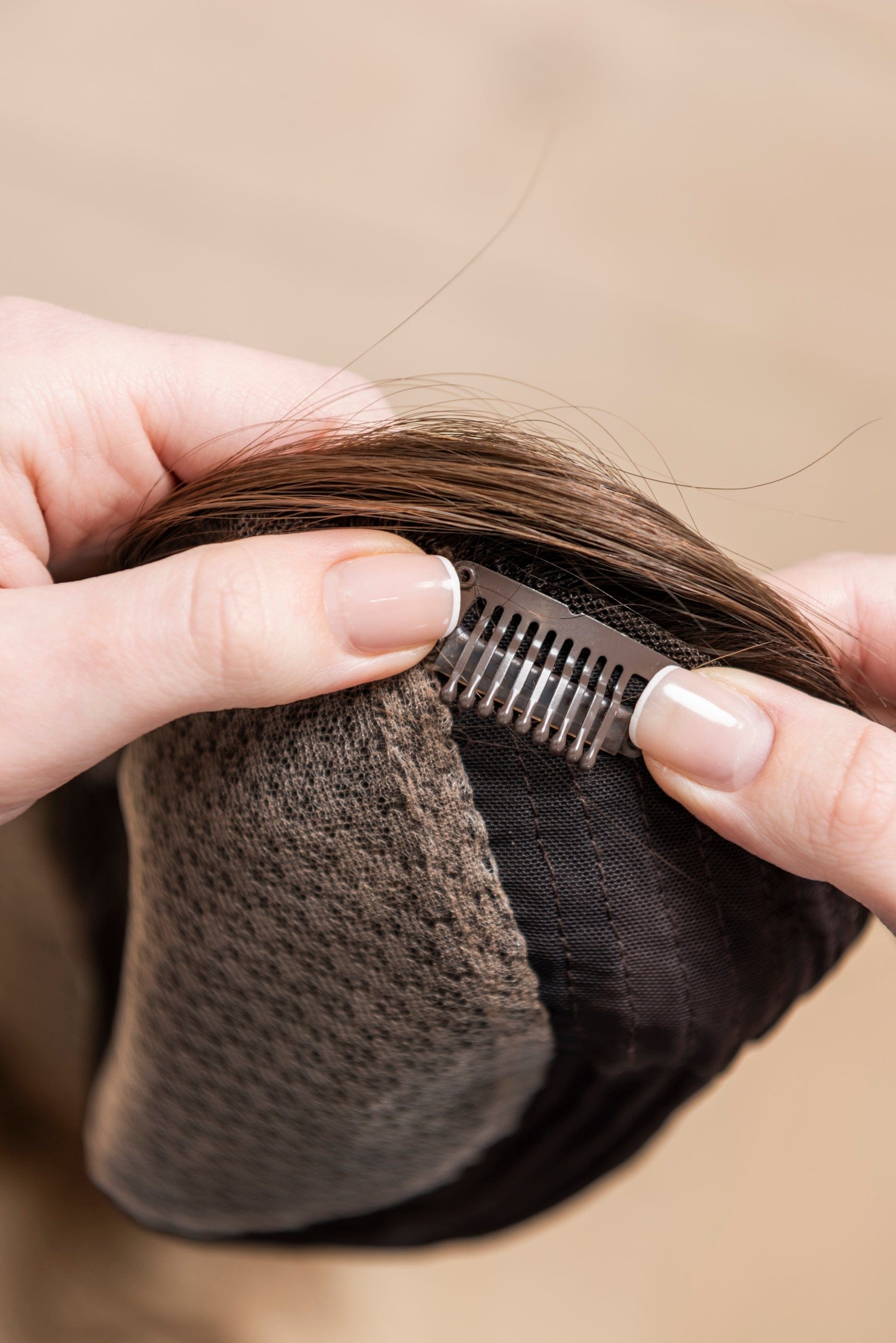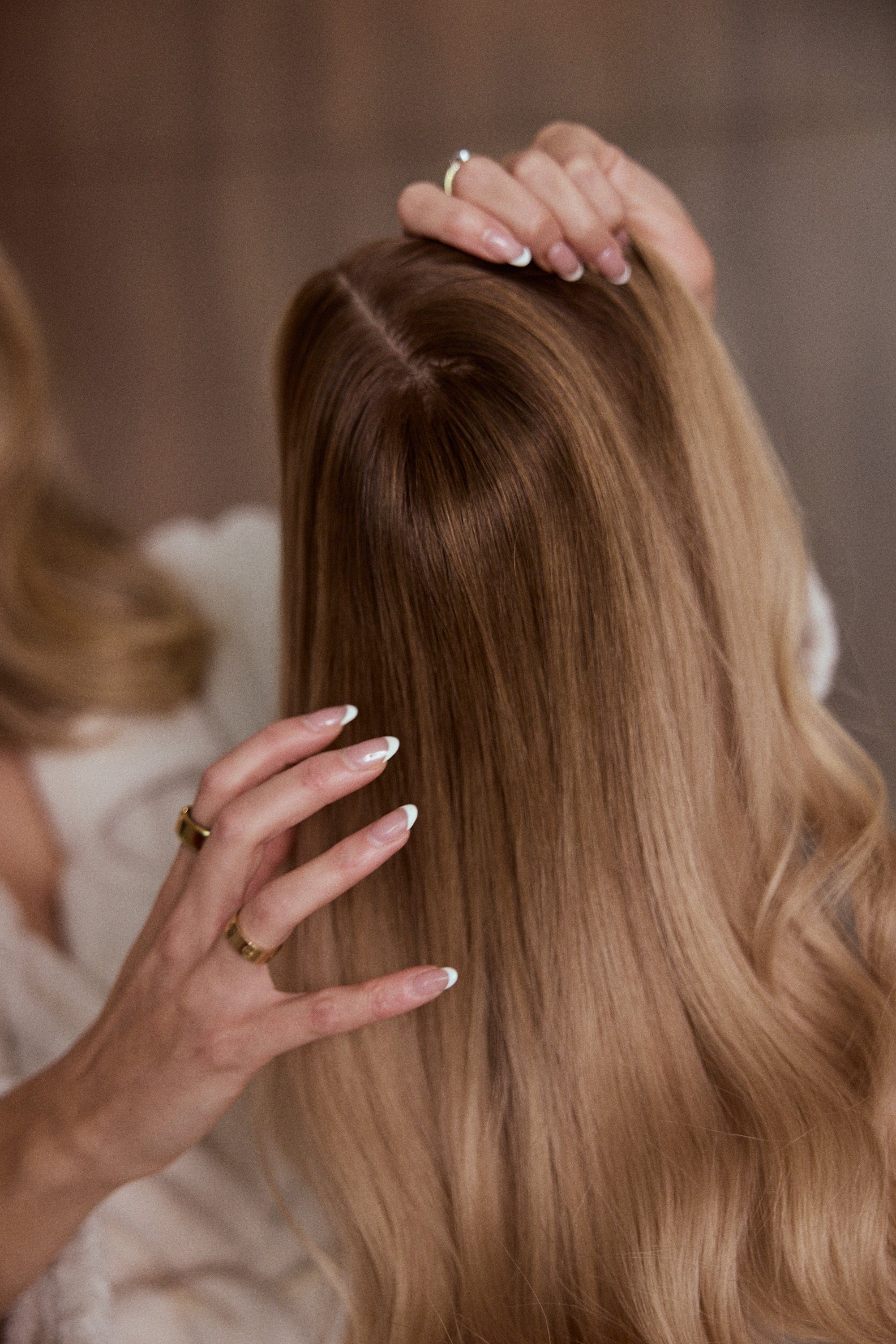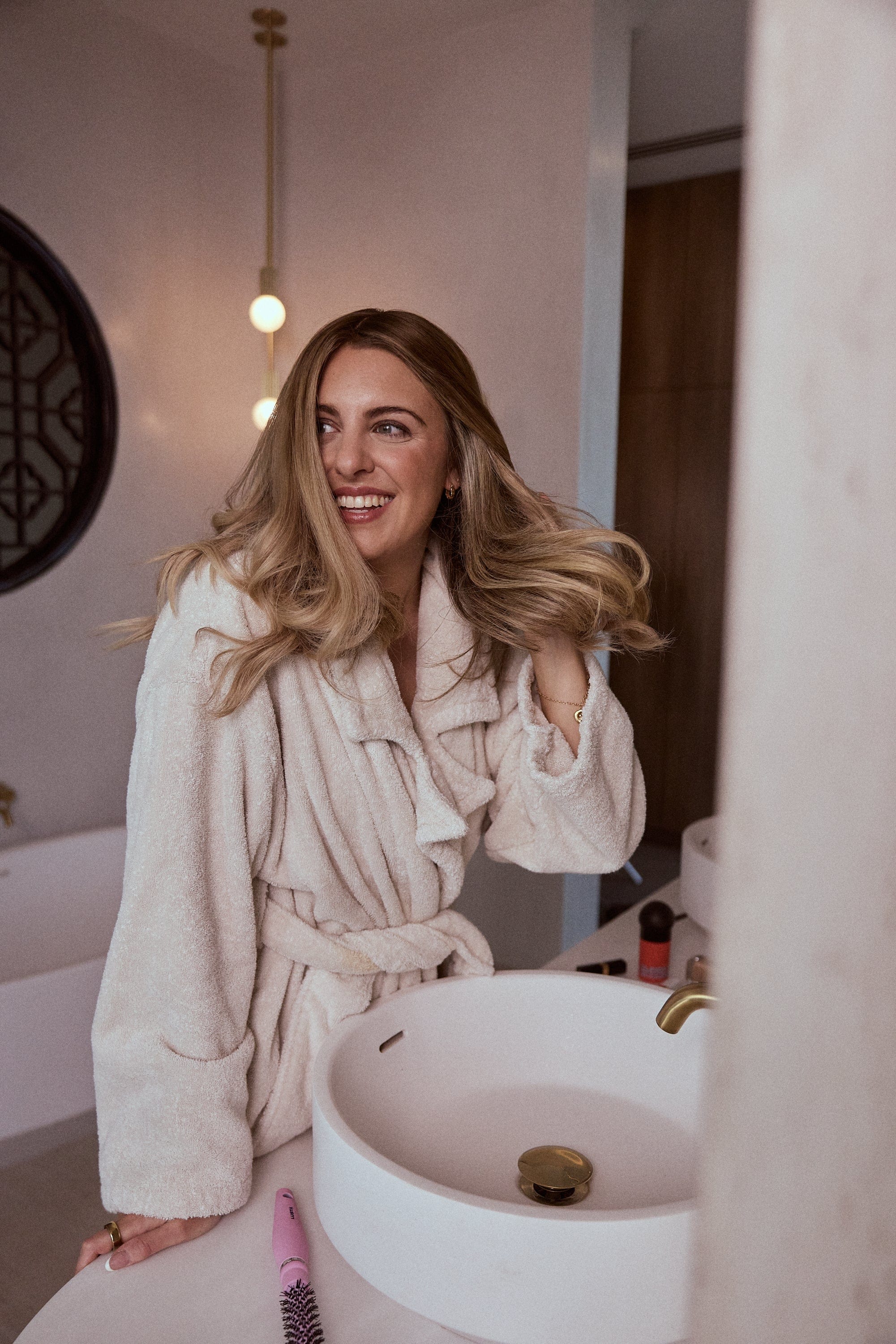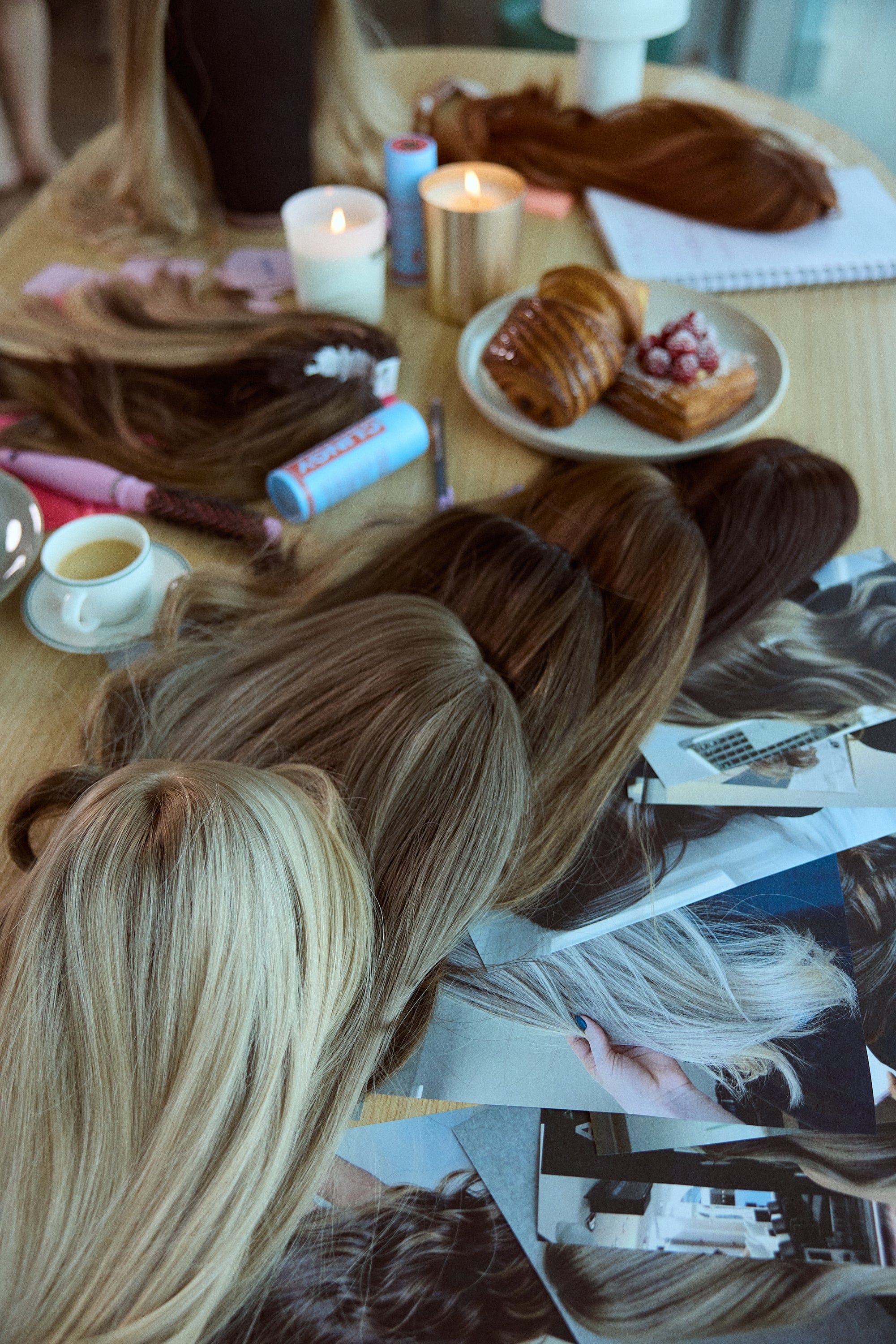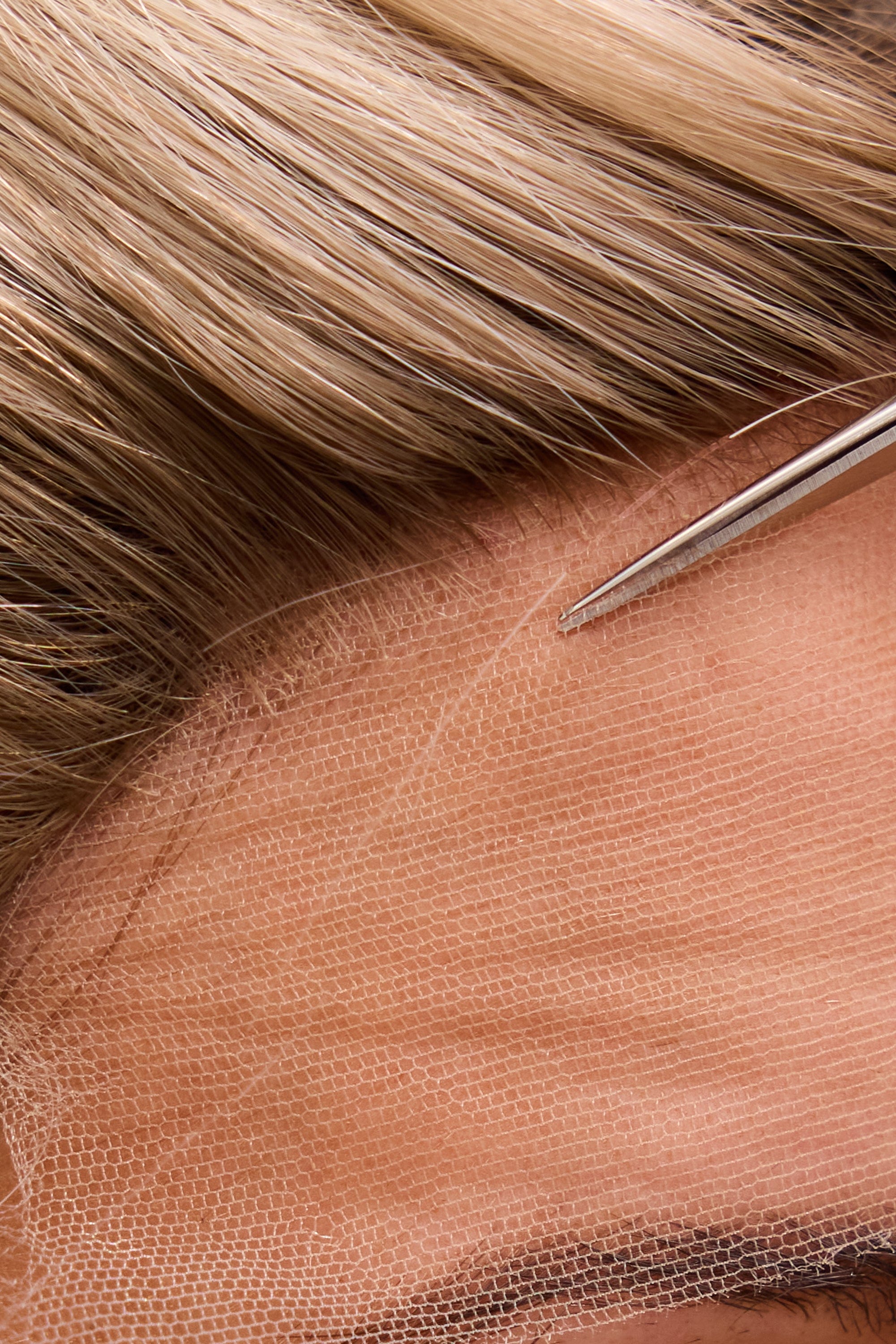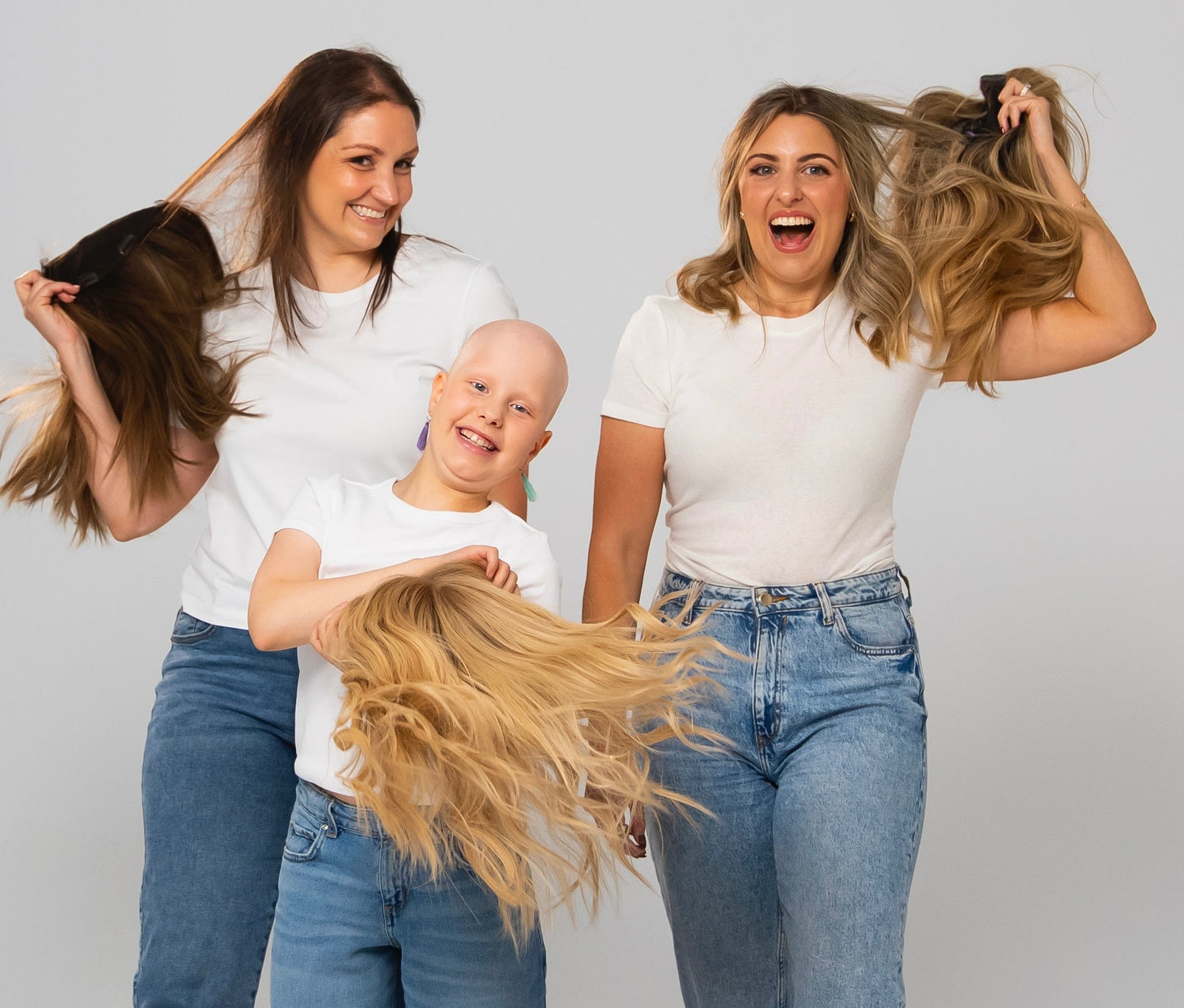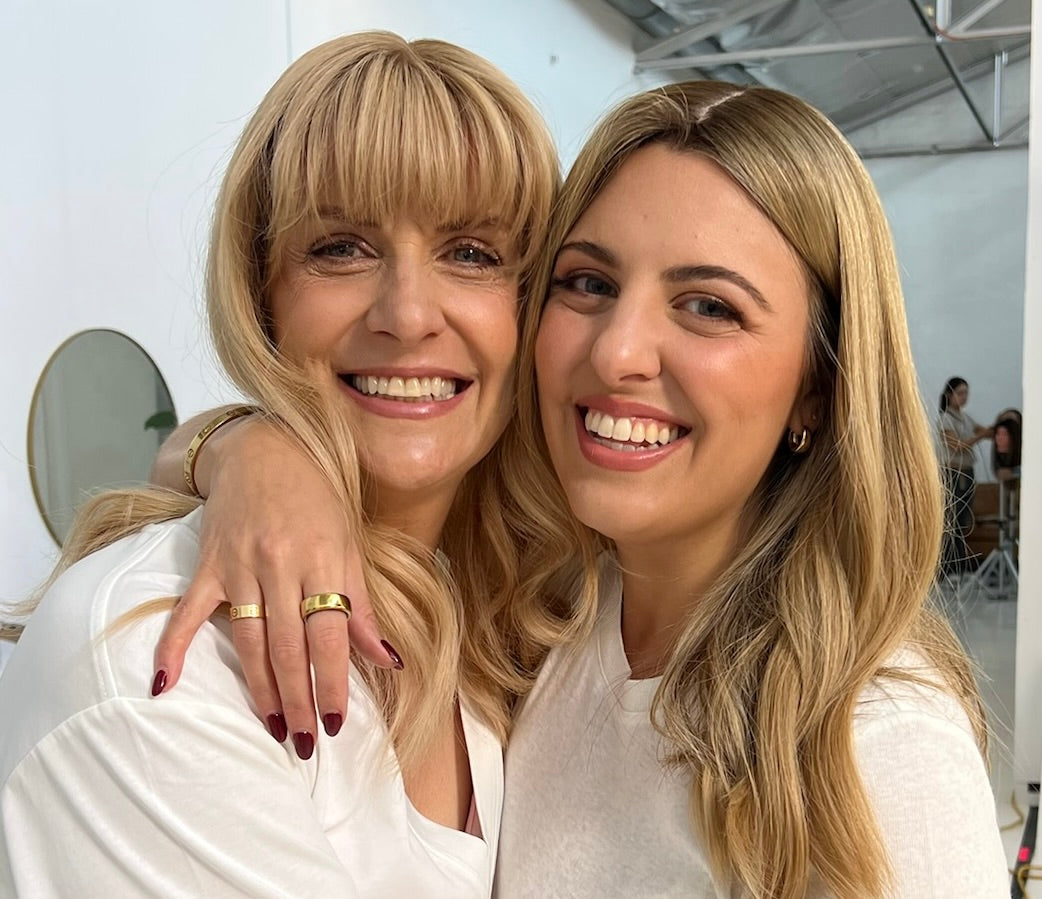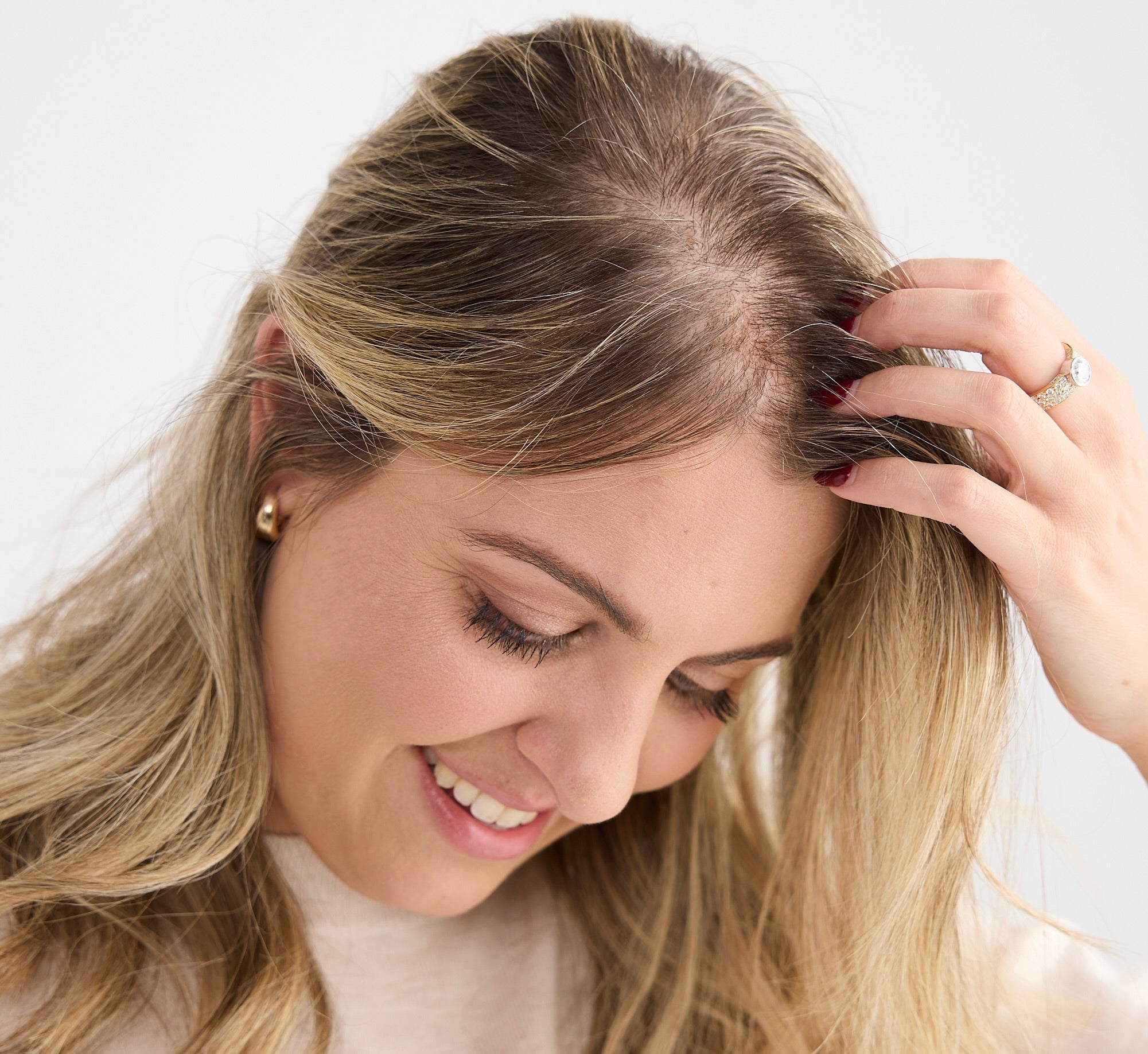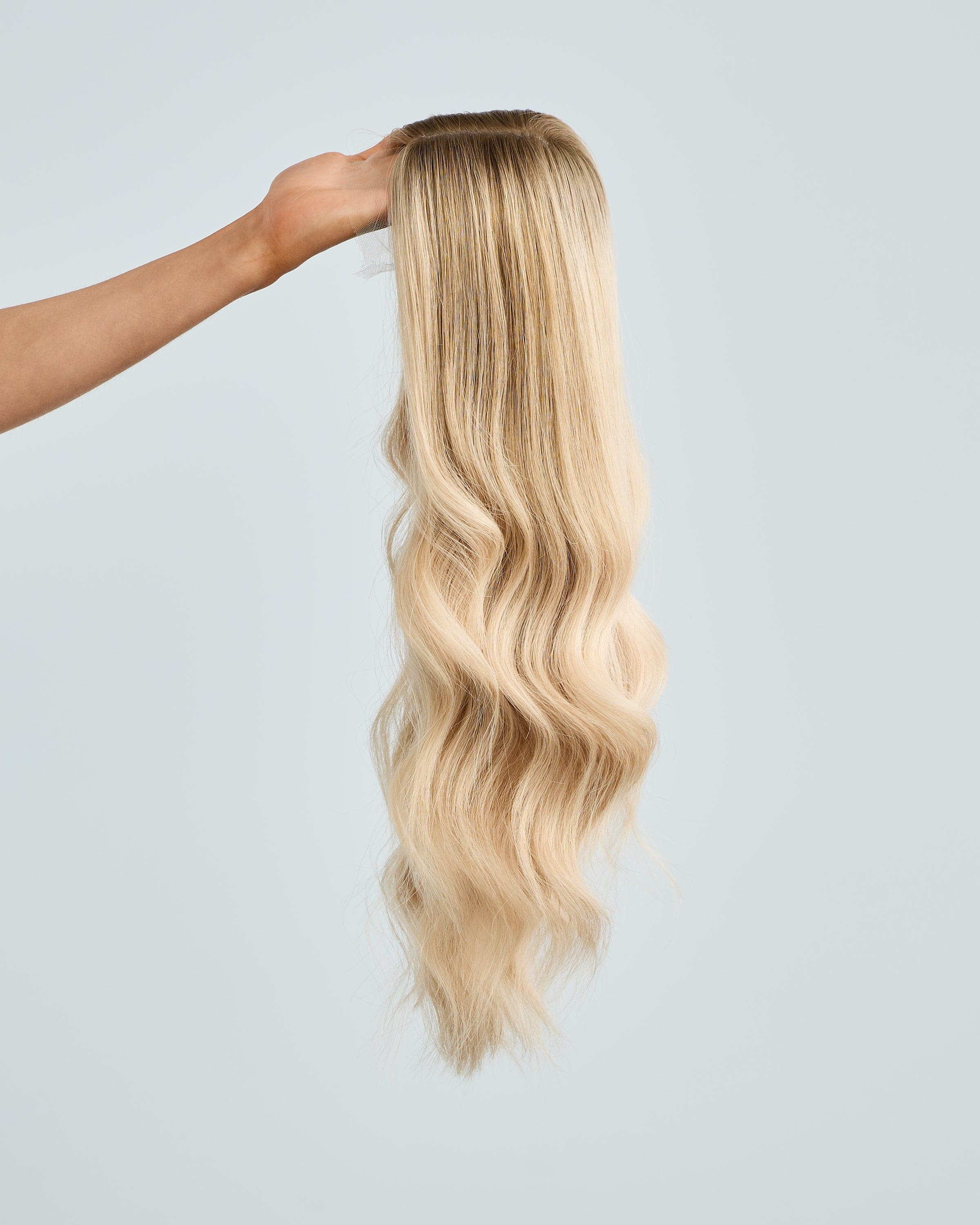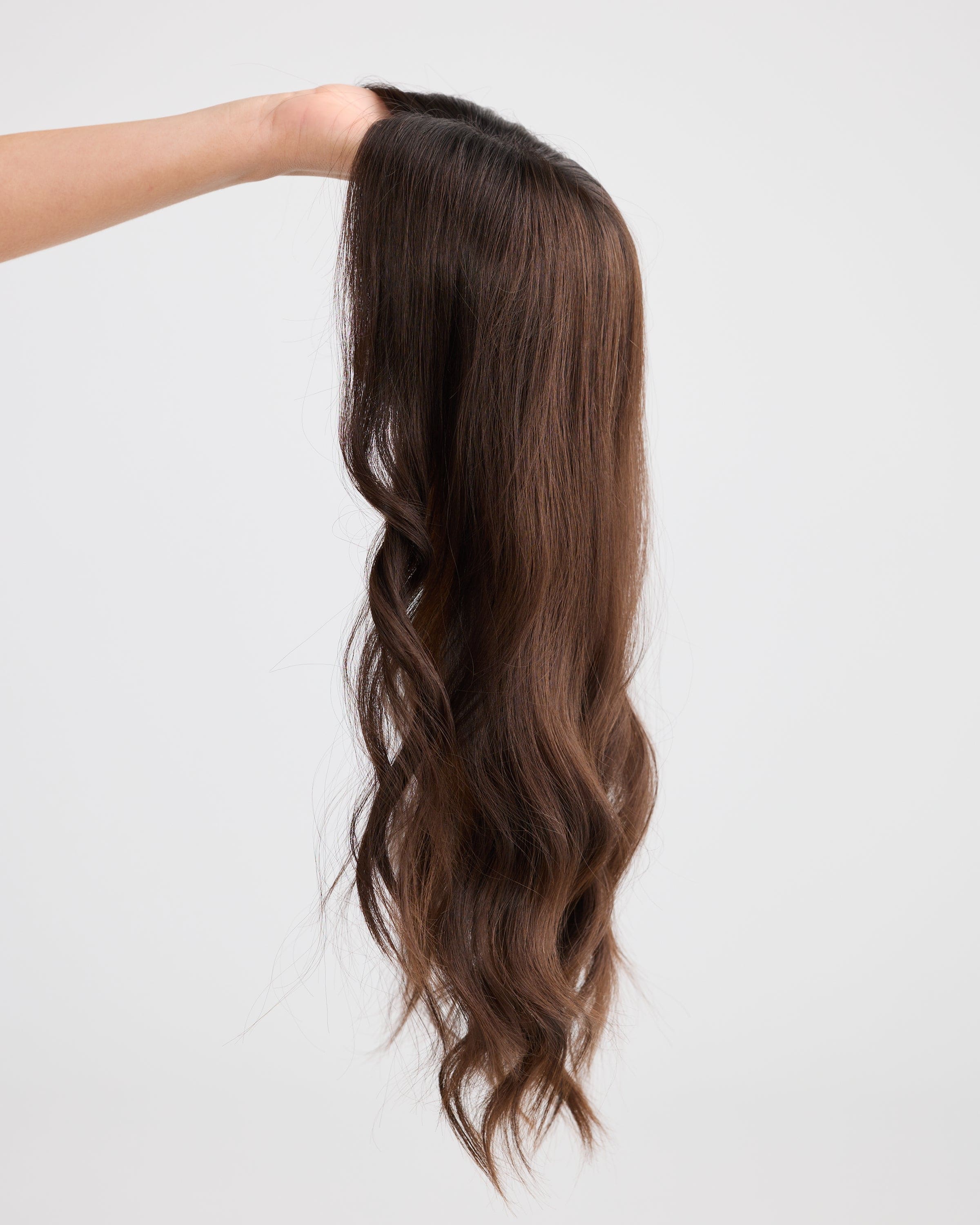This blog exists to break down everything about alopecia and give you all the information you need for navigating your alopecia journey. Alopecia literally just means 'hair loss', and there's so many different types.
Oftentimes, people assume that 'alopecia' automatically refers to total hair loss all over the body, but this is not the case. Certain types of alopecia can cause hair loss all over the body (more on this later), but alopecia can be anything from short-term hair thinning to life-long hair loss.
Today we're deep diving into everything alopecia. Here's what you'll find in this blog 👇
- Introduction to Alopecia
- Different Types of Alopecia
- The Science of Alopecia
- Genetics Factors for Alopecia
- Environmental Factors for Alopecia
- Treatment Options for Alopecia
- Wigs and Toppers: An Alternative Solution for Alopecia
- The Emotional Side of Alopecia
1. Introduction to Alopecia
So, alopecia, our hair-loss companion, has been around for quite a while. It’s not a modern-day phenomenon; it’s been weaving its way through history, making appearances here and there.
The term “alopecia” itself comes from the Greek word “alopex,” meaning fox, referring to the hair shedding process of foxes.
Historically, alopecia has been documented in various cultures and eras. The Ebers Papyrus, an ancient Egyptian medical text dating back to 1500 BCE, even mentions remedies and solutions for hair loss. It’s fascinating to think that our ancestors were also brainstorming ways to deal with alopecia, trying concoctions and remedies to keep their locks intact.
Fast forward to the Roman Empire, and we have Julius Caesar, a notable figure dealing with hair loss. Rumor has it, he was pretty self-conscious about it and used to rock laurel wreaths to cover his balding scalp. It’s like the OG version of a hair topper!
Throughout the Middle Ages and the Renaissance, wigs and hairpieces became the go-to solutions for those experiencing hair loss. They were like the must-have accessories, allowing people to flaunt their style while dealing with hair loss discreetly.
In more recent history, the understanding of alopecia has evolved significantly. The 20th century saw the rise of medical and scientific research into the causes and types of alopecia.
Today, the conversation around alopecia is more open and inclusive. We have communities, like ours, where we share our stories, our struggles, and our solutions. We have advanced significantly in developing products like Lusta’s Hair toppers and wigs, allowing us to reclaim our confidence and embrace our journeys with alopecia.
It’s empowering to know that we are part of a long line of resilient and innovative individuals who have navigated life with alopecia. We’ve come a long way from the days of laurel wreaths and ancient remedies, and it’s exciting to think about what the future holds for us and our community.
2. Different Types of Alopecia
Androgenic Alopecia: Androgenic Alopecia is a genetic form of hair loss which causes diffused thinning all over the crown of the head. It's known by a few other names, such as female-pattern hair loss or female-pattern baldness. Androgenic Alopecia doesn't usually happen over night. It's a slow progression of hair loss which will happen over many years, usually beginning in your 30's. This type of alopecia is usually life-long.
Alopecia Areata: Alopecia Areata is an autoimmune condition which causes hair loss in patches all over the body. Alopecia Areata can look different for everyone. Some will experience circular shaped patches of hair loss all over their scalp, some will experience this all over their body. Some might have multiple patches, others might have only one. Alopecia Areata can begin at any age, from an infant to your late 90's. This type of alopecia is usually life-long.
Alopecia Totalis: Alopecia Totalis is a form of Alopecia Areata where hair loss progresses to the entire head, often including brows and lashes. Alopecia Totalis is often unpredictable. Hair can grow back and fall out again at random. This type of alopecia is usually life-long.
Alopecia Universalis: Alopecia Universalis is another form of Alopecia Areata, however, with Universalis, the hair loss progresses across the entire body. This includes brows, lashes and body hair. This type of alopecia is usually life-long.
Telogen Effluvium: Telogen Effluvium is a temporary form of hair loss which shows up similarly to Androgenic Alopecia. Telogen Effluvium is usually triggered by stress. It could be physical stress, such as having a surgery, or emotional stress. Telogen Effluvium usually happens more suddenly than Androgenic Alopecia, but will usually return to it's normal state after 3-6 months. However, if you have alopecia in your genetics, Telogen Effluvium may trigger Androgenic Alopecia to begin.
Post-Partum Hair Loss: Similarly to Telogen Effluvium, Post-Partum hair loss is usually a temporary form of hair loss. Your body does a LOT of hardwork to grow and birth new life, and after going through all that, growing hair is the least of it's worry. Post-partum hair loss usually begins 3-6 months after having a baby, but will begin to return to it's natural state 3-6 months later.
Trichotilomania: Trichotilomania, often referred to as 'trich', is a mental health disorder on the OCD spectrum. Trich causes a person to compulsively pull out their hair (i.e. head hair, eyelashes and eyebrows). Hair pulling is often done unconsciously as a way to cope with anxiety or stress. Hair pulling can often lead to permanent hair loss.
Medical-related hair loss or medicine-induced hair loss: Certain medical conditions such as PCOS, Lupus, Thyroid Conditions and Diabetes can all have a side-effect of causing hair loss. Similarly, certain medications can also cause hair loss.
3. The Science of Alopecia
Alopecia is not merely about visible hair loss; it’s a culmination of intricate cellular and molecular disruptions occurring beneath the skin surface. Let’s explore the specific scientific processes that contribute to this condition.
Disruption in Hair Growth Cycle:
Every hair strand undergoes a cyclical process involving growth (anagen), regression (catagen), and rest (telogen). In alopecia, there’s a significant disruption in this cycle, predominantly characterized by a shortened anagen phase and prolonged telogen phase. This alteration leads to reduced hair length and increased hair shedding.
Follicular Miniaturization:
One of the key processes in alopecia is follicular miniaturization. It involves the progressive shrinking of hair follicles due to the impact of dihydrotestosterone (DHT), a derivative of the hormone testosterone. This miniaturization renders the follicles incapable of producing healthy, terminal hairs, leading to the growth of vellus (thin, short) hairs instead.
Inflammatory Response:
Inflammation is a crucial player in alopecia. The immune cells infiltrate the hair follicles, releasing pro-inflammatory cytokines and causing oxidative stress. This inflammatory environment damages the hair follicle cells, impeding their ability to sustain normal hair growth and leading to hair thinning and loss.
Dermal Papilla Cell Activity:
Dermal papilla cells, located at the base of the hair follicles, are essential for hair growth and cycling. These cells communicate with other follicular cells, regulating the hair growth cycle. In alopecia, the activity and signaling pathways of dermal papilla cells are altered, affecting their ability to induce hair growth.
Vascularization and Nutrient Supply:
Adequate blood supply is paramount for hair follicle nourishment and function. The blood vessels around the follicles deliver essential nutrients and oxygen. In alopecia, there can be a compromise in the vascularization around the hair follicles, leading to a deficiency in nutrient and oxygen supply, which adversely affects hair growth.
Apoptosis and Cell Death:
Apoptosis, or programmed cell death, is a normal cellular process. However, in the context of alopecia, there’s an increased rate of apoptosis in the hair follicle cells. This elevated cell death contributes to the weakening and eventual loss of hair.
4. Genetic Factors for Alopecia
When it comes to hair loss, our genes are like the unseen puppeteers pulling the strings behind the curtain. It’s a dance of DNA, where our genetic code influences the resilience, density, and lifespan of our hair.
Hair loss often runs in families, indicating a strong genetic predisposition. If you have close relatives who have experienced hair loss, the chances are that you might encounter it too. It’s like a family heirloom, but not the kind anyone is eager to receive.
The genetics of hair loss is not a simple one-gene, one-trait scenario. It’s polygenic, meaning multiple genes contribute to the likelihood of experiencing hair loss. These genes may come from either parent, creating a complex interplay of genetic variants that determine hair structure, growth cycle, and density.
Our genes dictate how our bodies respond to environmental factors, aging, and hormonal changes. The expression of certain genes can alter the hair growth cycle, leading to a shortened growth phase and extended resting phase. This imbalance in the hair growth cycle can result in increased hair shedding and thinning.
Ongoing research is unraveling the mysteries of the genetic basis of hair loss. Scientists are identifying specific genes and genetic markers associated with hair loss, paving the way for personalized treatments and interventions. These discoveries are crucial in developing targeted therapies that address the root cause of hair loss at the genetic level.
Understanding the genetic aspect of hair loss empowers us to make informed decisions about our hair health. It allows us to be proactive, seeking early interventions and adopting lifestyle changes that can potentially mitigate the impact of our genetic predisposition to hair loss.
5. Environmental Factors for Alopecia
Although genetics often play a major role in hair loss, environmental factors may also be at play.
Pollution:
Air pollution is a silent assailant on hair health. The myriad of pollutants, including smoke, dust, and industrial emissions, can settle on the scalp and hair, leading to irritation, damage, and, eventually, hair loss. These pollutants can strip away the natural oils, leaving the hair vulnerable to breakage and thinning.
UV Radiation:
The sun’s ultraviolet rays are not just harmful to our skin but also to our hair. Prolonged exposure can damage the hair cuticle, the outer layer of the hair strand, leading to weakened, brittle hair. It’s like a constant battle between the sun and our strands, with our hair often bearing the brunt of the damage.
Stress:
Our modern, fast-paced lives are often filled with stress, and our hair can feel the impact. Stress can disrupt the normal hair cycle, pushing more hairs into the shedding phase. It’s a ripple effect, where the waves of stress touch our minds and extend to our hair, impacting its growth and vitality.
Nutritional Deficiencies:
The food we consume is the fuel for our bodies, and any deficiencies can reflect in our hair health. Lack of essential nutrients like iron, zinc, and vitamins can lead to hair thinning and loss. It’s like trying to grow a plant without adequate water and nutrients; it simply won’t thrive.
Harsh Hair Care Products:
The products we choose to pamper our tresses with can sometimes do more harm than good. Harsh chemicals, sulfates, and alcohols can strip the hair of its natural oils, leading to dryness, breakage, and hair loss. It’s essential to choose products that are gentle and nourishing, allowing our hair to dance freely without any damage.
Lifestyle Choices:
Our habits and lifestyle choices, such as smoking and excessive alcohol consumption, can also impact hair health. These factors can reduce blood flow to the scalp and lead to oxidative stress, creating an environment where healthy hair struggles to survive.
6. Treatment Options for Alopecia
When it comes to treating hair loss, unfortunately the science isn't quite there in terms of a silver-bullet 'cure'. Some treatment options can prevent further hair loss or slow down the rate of hair loss, however, there is no treatment which is 100% effective for growing back hair. Like me, I'm sure you've seen the ads for hair growth solutions. They promise results and show incredible before and afters. Something to remember when looking at these treatment options is whether the model in those ads has a genetic form of hair loss or autoimmune condition, or whether they have a temporary form of hair loss, such as Telogen Effluvium, and their hair was going to grow back anyway.
Trying different treatments can be an important part of your journey. It definitely was for me! I personally tried most of the things I'm about to list, and nothing worked for me. However, this doesn't mean you won't see results from them.
*ALWAYS CONSULT A DOCTOR BEFORE BEGINNING ANY FORM OF TREATMENT
Minoxidil:
Minoxidil is a widely recognized topical solution used to combat hair loss. It aims to revitalize shrunken hair follicles, increase their size, and prolong the growth phase of the hair cycle. It’s a go-to for many dealing with hair thinning and loss, working by widening blood vessels, allowing more oxygen, blood, and nutrients to the hair follicles encouraging growth and thickness. However, it’s not a miracle cure and doesn’t guarantee the regrowth of hair; it primarily works to prevent further hair loss.
Finasteride:
Finasteride is an oral medication designed to inhibit the production of DHT, a hormone contributing to hair loss. By reducing DHT levels, finasteride helps maintain existing hair and promotes the regrowth of hair follicles, acting like a shield protecting your strands from hormonal influence. However, it’s not a universal solution and doesn’t restore all lost hair.
Laser Cap Therapy:
Laser Cap Therapy employs Low-Level Laser Therapy (LLLT) to stimulate hair follicles. It’s a technology-driven approach aiming to reduce hair loss and promote hair thickness. However, it doesn’t promise to regrow all lost hair and results can vary widely.
Vitamins and Supplements:
Vitamins and supplements can provide essential nutrients that support hair health, potentially reducing hair loss. They are the nutritional backbone, aiming to fortify hair from within. If your hair loss is due to a vitamin deficiency, boosting your intake through vitamins or supplements can definitely help get your hair back on track.
PRP Injections:
PRP injections use one’s own blood to rejuvenate hair follicles. They are a form of regenerative medicine that can stimulate hair growth by enhancing blood flow to the hair follicles. However, they don’t guarantee the restoration of all lost hair.
Hair Growth Shampoos:
Hair growth shampoos are formulated to create an optimal scalp environment for hair growth. They can cleanse and nourish the scalp, potentially reducing hair loss.
Rosemary Oil:
Rosemary oil is a natural remedy known for its potential to improve hair thickness and growth. It’s a herbal approach to maintaining scalp health, but it’s not a definitive solution for regrowing lost hair.
7. Wigs and Toppers: An Alternative Solution for Alopecia
Wigs and toppers have come a long way in recent years. Instead of the bulky monstrosities you see at Halloween costume shops, they're super realistic and comfy- made to be worn daily.
Slipping on a wig or attaching a topper can be as quick and easy as tying your shoelaces. It’s not a cumbersome process; it’s a moment in your morning routine, a moment of transformation and empowerment. It’s about starting your day with confidence, with the feeling of being ready to face the world, to face yourself.
And the realism? It’s uncanny. The craftsmanship, the attention to detail, it all comes together to create something that’s not just a piece of hair; it’s a piece of you. It blends seamlessly with your natural hair, creating a look that’s undeniably you. It’s not about masking; it’s about enhancing, about bringing forth your inner beauty.
But more than just a physical transformation, wigs and toppers give you the emotional space to process your hair loss. They’re not a band-aid; they’re a support system, allowing you to navigate your feelings, your struggles at your own pace. They’re a constant, a reassurance that it’s okay to take your time, to feel your emotions, to be human.
They allow you to explore your style, to play with your look without the commitment. It’s about freedom, about expression, about finding joy in the little things. It’s about rediscovering yourself, about seeing your reflection and recognizing the person staring back at you.
8. The Emotional Side of Alopecia
Losing your hair isn’t just about a changing appearance; it’s a rollercoaster of emotions, a journey of ups and downs. It’s like losing a part of your identity, a piece of what makes you, well, you. It’s a silent struggle, one that’s often hidden behind closed doors, behind smiles and assurances that “I’m fine.”
It’s not just about vanity; it’s about feeling like yourself. It’s about looking in the mirror and recognizing the person staring back at you. When your hair starts to thin or fall out, it can feel like you’re losing control, and that’s a tough pill to swallow. It’s a journey filled with self-doubt, with questions like “Will people notice?” or “Do I still look like me?”
And let’s be real, it can be lonely. It can feel like you’re the only one going through it, like you’re isolated in your struggle. But here’s the thing, you’re not alone. There are so many of us out there, each with our own story, our own journey with hair loss. It’s a silent sisterhood, one that understands the tears, the frustration, the longing.
But here’s the silver lining, the light at the end of the tunnel: it’s also a journey of rediscovery, of resilience. It’s about finding new ways to embrace your beauty, to feel confident and empowered. It’s about reclaiming your sense of self, about learning to love yourself, no matter what your hair, or lack thereof, looks like.
And yes, it’s about finding solutions that work for you, whether that’s wigs, toppers, or just rocking your natural look. It’s about finding a style that makes you feel like you again, that brings back that spark of joy and self-love. It’s about learning to navigate this new normal and finding the strength to embrace it.
It’s not an easy journey, and it’s okay to feel the emotions, to grieve the loss. But it’s also important to remember that you’re more than your hair. You’re beautiful, you’re strong, and you’re capable of overcoming this. It’s about finding support, connecting with others who understand, who’ve been there. It’s about sharing your story, your struggles, and your victories.
Remember, it’s okay to feel the way you do. Your feelings are valid, and it’s important to acknowledge them.
So, let’s talk about it, let’s share our stories, our tips, our highs, and our lows. Let’s break the silence and create a space where we can be ourselves, where we can be honest about our struggles and celebrate our victories, no matter how small they may seem. Because together, we can get through this, we can find our confidence again, and we can embrace our beauty, inside and out.


